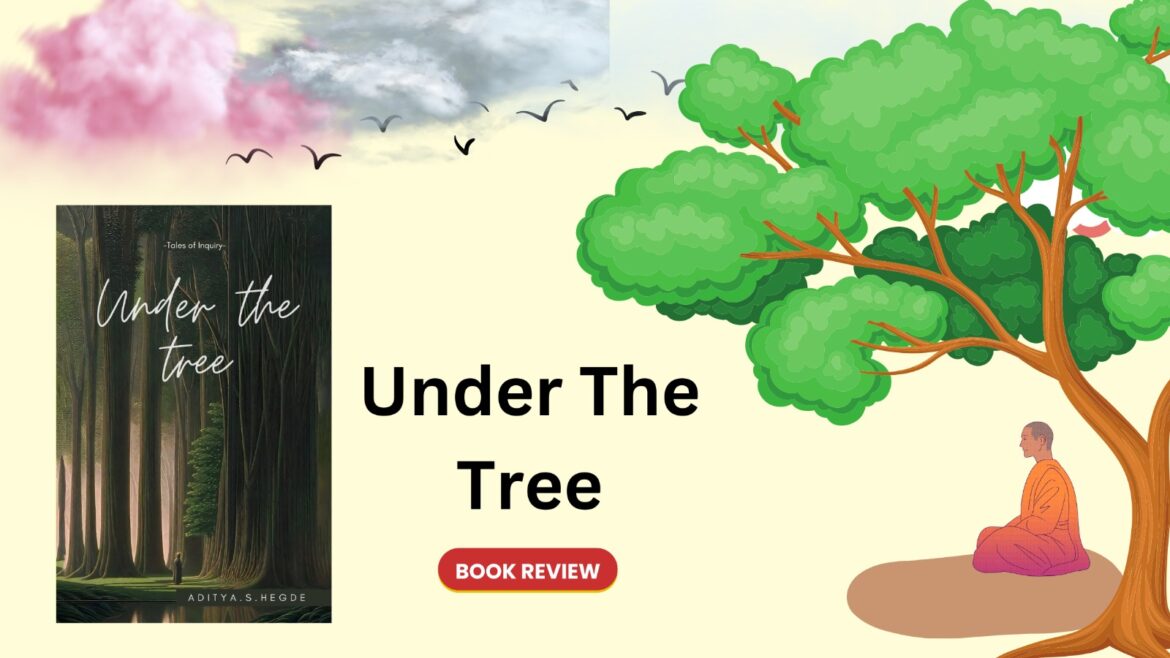In our fast-moving world where chaos through a tech-driven life forms not only a fragment but is majorly routine and an accepted normal. In the midst of all this, the existential questions about life, its meaning, the purpose of our existence and various other topics that are food for thought trouble most people as they are unable to find answers and people who could answer them. “Under the Tree” by Aditya S Hegde is a powerful endeavour in this direction as it not only attempts to answer these and many other questions of the readers, but also takes them on a journey that finds its roots in the existential reality and becomes the torchbearer of a future in spirituality and enlightenment.
“Under the Tree” is not just a simple jotting of ideas as they occurred to the author. The sequential arrangement of the ideas and their explanation through fiction format is one of the major appealing elements of the book. At the same time, the tone of the book remains friendly and insightful throughout. Reading the book gives the readers some powerful ideas that put them in a pensive mood, as well as a perspective to see life for its wholeness and not just around the issues that seem equal to life and death.
Even though the stories in “Under the Tree” are individualistic and attempt to answer different questions, the underlying message in all of them is one. This question, conveyed through the lives of different beings, humans and animals, makes the reading experience deeper. The presence of animals struggling in their lives reinforces the idea that everyone has their share of struggles, and the perseverance to fulfill the purpose of life is the crux of everything. While the author’s insight and profound wisdom find an accurate representation and reflection in the book, on the other hand, it gives readers powerful thoughts to think upon and examine their lives through that lens. Therefore, categorizing the book into any one category is not possible.
“Under the Tree” will find an instant appeal among people who are interested in finding answers to the existential questions that may have been surrounding them for a long time. They may also find an insight and a perspective to see things differently and develop an understanding of what matters and what does not. At the same time, the simplicity of the book will also find an appeal among children due to the narrative technique followed by the author. The storytelling technique followed by the author ensures that they can learn valuable lessons in the early stages of their lives and grow up to become mature individuals in their young years.
In addition, the book contains messages that have formed a fragment of routine lives for a long time before, and the subjects it talks about will have a universal appeal. Whether it is the audience of today or the generation of tomorrow, the valuable lessons that the book imparts will always hold relevance. Hence, “Under the Tree” carries depth beyond the surface level. The consistent presence of a monk who answers questions is one of the salient features of the book. His presence hints towards the fact that profound wisdom in life is found in the simplest forms, and nothing can replace it. His vibe throughout the book gives a calming and soothing impact on the readers and his way of giving answers invites them to sit calmly and listen to his words. His being unnamed also hints towards the fact that any person can acquire that level of knowledge and attain the peace that the monk embodies. In the journey of spirituality, mental peace, enlightenment and understanding life closely, this book is a milestone.
It is interesting to note how the author has titled the book “Under the Tree” and kept a subtitle as ‘tales of inquiry.’ Undoubtedly, the tales follow the Socratic format of question and answer, but the insights they share are more like secrets of the universe, which are beneficial to a person’s well-being. In light of this, the title could have multiple interpretations like reading the book may have an impact as that of the experience of being in the shade of a tree, the benefits of the book are as many as that of a tree, the wisdom shared in the book is profound and as old as the existence of trees, etc. It all depends on the perspectives that the readers formulate after reading the book.
This book is recommended not only to people who like fiction or non-fiction but also to people who may not be much into reading books. It is due to the crucial life lessons that it carries that the book is a recommended reading for people of all age groups, and even a read-aloud bed time story form for children.



